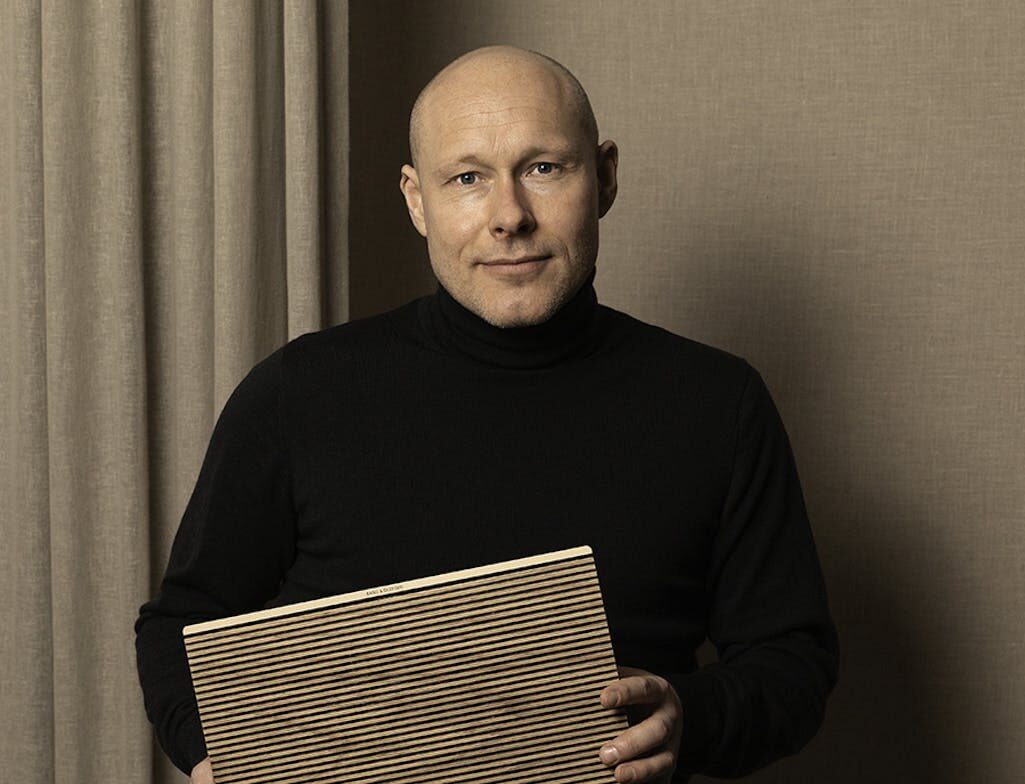Mads, why did you decide to take B&O in a circular direction?
“As an industry, we need to acknowledge that our current way of doing things is not sustainable, not now and not in 100 years. Simultaneously, we saw new movements in our target group toward a ‘buy less, buy better’ philosophy. This means that our customers have become even more quality-oriented and expect our products to have a longer lifetime. And we feel that we can be part of that movement with great credibility because long-term designs have historically been part of B&O’s DNA. But for a while, we let ourselves get carried away by the exponential development in technology, and we saw the lifetime of our products decrease.
We saw the writings on the wall and knew we had the competencies to take the company in a more circular direction, so we decided it should be our strategy one year ago. We asked ourselves: If we want to create more circular products that go beyond the first user, what are the implications for the design process? It meant new requirements for customization, durability, reparability, and upgradability. That means it has to be easy to change the software. If we design upgradability into the hardware from the beginning, the software is easily adjustable.
Modularity is a fundamental principle in this design. Because if we look ten years ahead, there are things we cannot see. That sets high requirements in terms of specs, materials, and performance. What we can do is to make sure that the product has enough ‘horsepower’ to last. With these modular elements, we consider that we may need to change both the software and the hardware.”
What role did design play in this transition?
“Design is the core. Design is change. We have to design differently. And it is not only about industrial design but also about design thinking in service design and experience design. Design is also our link to the customers and interaction with them. Designing for longevity has to be more than a promise; it has to be an outcome. In ten years, we will know if we have succeeded. We interact with our customers when we design to ensure emotional durability and a connection with the product. And, of course, there is the aesthetics – how can we make the design timeless and provide a good customer journey?”
How do design competencies factor in?
“Designing for circularity is a team effort – we design a system, not a single product. Our designers also have the ability to design for a particular situation and understand the customer experience. If we design a solution that only covers 80% of the customer’s needs, they will not choose that solution.”

“We want to be an industry leader in reparability to support longevity,” Mads Kogsgaard Hansen, Head of Product Circularity in B&O. Photo: Bang & Olufsen
What’s next for B&O in this transition?
“Design thinking was the starting point for the process around our new sustainability strategy. We derived the strategy from two pilot projects, which we used to examine how the world would receive our new circular profile.
With the Beosound Level speaker, we tested how we can design for circularity. Secondly, we have our recreated classics product line that we used to test longevity as an outcome. We brought back 50-year-old record players, remanufactured them completely, and added new design features. Then we sold them at 75.000 DKK each – they were ripped off the shelves.”
What is the goal for B&O in terms of circularity?
“We want to be an industry leader in reparability to support longevity. We are committed to continuing our cradle-to-cradle and remanufacturing strategy. We want to have ten certified products within three years.”
Do you have any tips for businesses that want to begin a circular transition?
“Just do it. Our strategy was not born at a desk but through actual design experiments. Start small. Make sure you connect your effort to your market position. B&O is not a climate champion in that sense; our strategy is longevity because that is one of our existing strongholds, which we can address with credibility. And finally, put teams and systems over individuals and single products. This is a holistic effort.”



